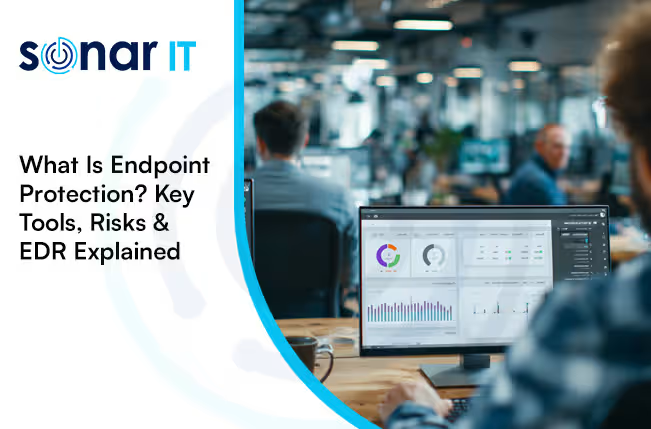Adapting to the Changing Landscape: Top 5 Cyber Security Trends in 2023
As technology continues to advance, the cyber security landscape is constantly changing. To protect their organizations from cyber threats, businesses and individuals must stay informed about the latest trends and developments in the field. With that in mind, now let's look at the top 5 cyber security trends expected to shape the landscape in 2023.
The first trend we'll discuss is the increased emphasis on cloud security. As more and more organizations move their operations to the cloud, ensuring that these environments are secure is becoming increasingly important. The second trend is the rise of artificial intelligence in cybersecurity. Artificial Intelligence (AI) has the potential to revolutionize the way we approach cybersecurity, but it also presents some unique challenges. The third trend is the growing threat of ransomware attacks. Ransomware is malware that encrypts a victim's files and pressures them to pay a ransom to restore access. As these attacks become more sophisticated, preventing and responding to them is becoming increasingly important. The fourth trend is the growing importance of endpoint security. As more and more devices are connected to networks, it's becoming increasingly important to ensure that these endpoints are secure. And finally, we'll discuss the importance of security automation. Automating specific security tasks can help organizations improve their efficiency and effectiveness, but it also presents some unique challenges.
This blog post will take a closer look at these emerging trends in cyber security and discuss their challenges and opportunities. We'll also share best practices for protecting your organization from cyber threats in the face of these trends.
.jpeg)
Trend 1: Increased Emphasis on Cloud Security
As more and more organizations move their operations to the cloud, the importance of securing these environments has become increasingly apparent. According to a recent survey, 80% of companies are using cloud services, which is expected to grow in the coming years.
The benefits of cloud computing are well-documented:
- Cost savings - Moving to the cloud can help organizations reduce their IT costs by eliminating the need for on-premises hardware and software.
- Increased efficiency - Cloud services can help organizations increase their productivity and agility as they no longer need to manage on-site servers.
- Scalability - Cloud services can quickly scale up or down depending on the organization's needs.
However, it also presents several security challenges, such as:
- Data breaches - As cloud services become more popular, the risk of data breaches increases.
- Access control - Businesses must correctly configure Cloud environments to ensure that access is restricted to authorized users.
- Malware protection - Organizations must protect their cloud environments from malware and malicious actors.
Organizations must take a proactive approach to cloud security to address these challenges. It includes implementing best practices such as multi-factor authentication, encryption, and regular security assessments. Additionally, organizations should work with trusted security partners to ensure that their cloud environments are adequately secured.
New technologies such as Cloud Access Security Broker (CASB) and Security Information & Event Management (SIEM) can help organizations protect their cloud environments.

Trend 2: The Rise of Artificial Intelligence in Cybersecurity
Artificial intelligence (AI) has the potential to revolutionize the way we approach cybersecurity. By automating specific tasks and analyzing large amounts of data, AI can help organizations identify and respond to threats more quickly and effectively.
However, the use of AI in cybersecurity also presents some unique challenges. For example, AI-based systems can be vulnerable to attacks themselves, and attackers may be able to use AI to bypass traditional security measures. Additionally, there are ethical concerns about using AI in security, such as the potential for bias or unintended consequences.
One of the most promising areas for the application of AI in cybersecurity is threat detection and response. Organizations can use AI to analyze large amounts of data, such as network logs and traffic, to identify patterns that indicate a potential attack. Additionally, Businesses can use AI to automate specific tasks, such as patch management and incident response, which can help organizations to be more efficient and effective in their security efforts.
Other areas of AI application in cybersecurity are:
- Automated vulnerability management
- Behavioral and anomaly-based detection
- Fraud detection
In conclusion, AI has the potential to revolutionize the way we approach cybersecurity, but it also presents some unique challenges. Organizations should carefully consider these challenges and work with trusted partners to ensure that their AI-based systems are secure and ethical.

Trend 3: The Growing Threat of Ransomware
Ransomware is malware that encrypts a victim's files and demands a ransom payment to restore access. These attacks have been growing in popularity in recent years and are expected to continue to be a significant threat in 2023.
One of the reasons for the increase in ransomware attacks is that they can be highly profitable for attackers. According to a recent study, the average ransom payment for a successful attack is $111,605. Additionally, ransomware attacks can be highly disruptive to organizations, as they can cause significant data loss and downtime.
To protect against ransomware attacks, organizations need to take a multi-layered approach to security. It includes implementing best practices such as:
- Regularly backing up essential data
- Keeping software and systems up to date
- Training employees on how to identify and avoid phishing attacks
- Implementing endpoint protection solutions
- Implementing network segmentation
In case of a ransomware attack, it is also essential to have an incident response plan in place. This plan should include procedures for containing the attack, assessing the damage, and restoring access to encrypted files.
In conclusion, ransomware is a growing threat that can be highly disruptive and costly for organizations. By taking a multi-layered approach to security and having an incident response plan in place, organizations can help protect themselves from these malware attacks.
Trend 4: Greater Focus on Endpoint Security
As more and more devices are connected to networks, the security of these endpoints has become increasingly important. Endpoints include laptops, smartphones, tablets, and IoT devices, which can provide entry points for attackers to gain access to an organization's network.
One of the main challenges of endpoint security is that it can be difficult for organizations to maintain visibility and control over all endpoints on their network. Additionally, as the number of endpoints continues to grow, it can be difficult for organizations to keep up with the latest security threats and patches.
Organizations must take a proactive approach to endpoint security to address these challenges. It includes implementing best practices such as:
- Regularly patching and updating devices
- Implementing endpoint protection solutions
- Implementing mobile device management (MDM)
- Restricting access to sensitive data and systems
- Implementing network segmentation
- Regularly monitoring endpoints for suspicious activity
Another critical aspect of endpoint security has an incident response plan in case of a breach. This plan should include procedures for identifying the source of the attack, containing it, and restoring the endpoint's security.
In conclusion, as the number of endpoints continues to grow, it's becoming increasingly important for organizations to focus on endpoint security. By taking a proactive approach and implementing best practices, organizations can help protect themselves from cyber threats at the endpoint level.

Trend 5: The Importance of Security Automation
Security automation uses technology to automate specific security tasks, such as patch management, incident response, and threat detection. Security automation can help organizations to improve their efficiency and effectiveness in dealing with cyber threats.
However, implementing security automation can also present some unique challenges. For example, organizations may need help integrating automation solutions with their existing systems or more expertise to configure and manage these solutions properly.
Additionally, there are concerns about the potential for automation to create new security risks or to reduce transparency in security operations.
One of the key areas where security automation can be beneficial is incident response. Automating specific incident response tasks, such as incident triage and containment, can help organizations respond more quickly and effectively to security incidents.
Other areas of security automation include:
- Automated vulnerability management
- Automated compliance and auditing
- Automated threat hunting
In conclusion, security automation can help organizations to improve their efficiency and effectiveness in dealing with cyber threats. However, it's essential for organizations to consider the challenges and risks associated with automation carefully and to work with trusted partners to ensure that their automation solutions are correctly configured and managed.
Leveraging the Latest Trends in Cyber Security
As technology continues to advance, the cyber security landscape is constantly changing. This blog post looks at the top 5 cyber security trends expected to shape the landscape in 2023.
Each of these trends presents unique opportunities and challenges for organizations. To stay ahead of the curve, organizations must monitor industry developments, adopt best practices, learn the cyber security mistakes to avoid and leverage the latest tools and technologies to enhance their security posture.
By keeping up with cyber security trends and taking a proactive approach, organizations can help protect themselves from emerging threats and ensure that their data and systems remain safe.
This blog post has provided valuable insights into the latest cyber security trends and best practices for protecting your organization from cyber threats. Stay informed and stay protected!
.svg)






